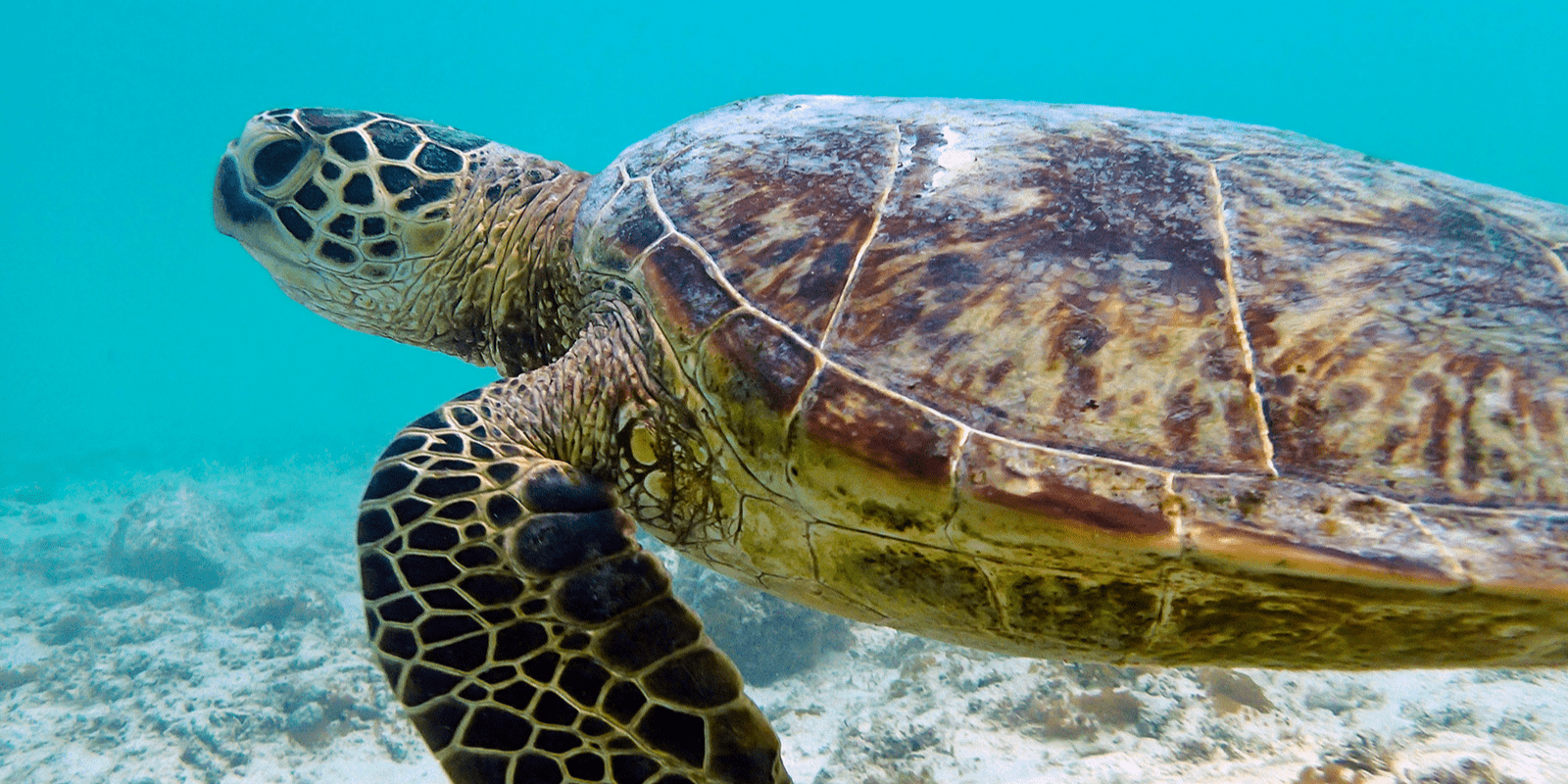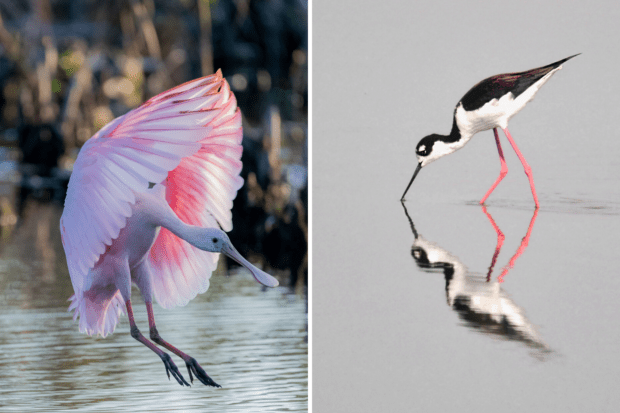We have much more to do and your continued support is needed now more than ever.
Nature-based Climate Strategies Protect People & Wildlife
The Natural Climate Solutions Platform is a path to a climate-resilient future.

The National Wildlife Federation’s Natural Climate Solutions Platform recommends nature-based strategies to benefit people, wildlife, jobs, and infrastructure.
The National Wildlife Federation recently released Natural Climate Solutions: A Federal Policy Platform, which lays out legislative recommendations to swiftly scale up natural climate solutions, for both climate mitigation and climate resilience.
Natural climate solutions are strategies that harness the ability of natural systems, like wetlands and prairies, to capture and store carbon dioxide in soil and vegetation, and to increase the resilience of communities to increasingly severe and frequent natural hazards and other climate impacts. Often, natural climate solutions have “co-benefits” as well, such as restoring or improving wildlife habitat and enhancing water or air quality. Plus, they often involve hands-on restoration and management of natural resources, thereby creating sustainable employment and economic opportunity for communities across the country.
Congress has an important role to play in supporting natural climate solutions. By significantly increasing investments in protection and restoration of federal forests, wetlands, and grasslands on public lands, and by incentivizing the private sector to do the same, states, landowners, and farmers can become vital carbon stewards.
Read three stories that illustrate climate solutions recommended by the National Wildlife Federation’s Natural Climate Solutions Platform that help people and wildlife.
The Tongass National Forest, Alaska
The Tongass National Forest stores the equivalent of 8 percent of all the stored carbon in the Lower 48’s national forests put together, making it one of the most important carbon sinks in the country. The Tongass is also responsible for healthy populations of wild salmon runs, sustaining vital ecosystems and 80 percent of the commercial salmon harvested in southeast Alaska. Those fisheries generate $60 million annually, according to the U.S. Forest Service. The combined economic impact of commercial, sport and subsistence salmon fishing, as well as hatchery operations, in Southeast Alaska, is estimated to be hundreds of millions of dollars. Many species, including bear species and the iconic bald eagle, also rely on the salmon that live in the forest’s waterways.

Exploration Green, Houston, Texas
In Houston, Exploration Green is a 178-acre reclaimed urban wetland, which was formerly an abandoned golf course. The site acted as a sponge during Hurricane Harvey, protecting 300 residents and 150 homes from potentially fatal flooding.
With only 80% of phase 1 completed for the project, a central pond collected 100 million gallons of water during the storm. When the project is finished, it is expected to drain up to half a billion gallons of stormwater and protect up to 2,000 homes. And, the wetland habitat is ideal for native wading birds, ducks, turtles, and amphibians. In 2018, Exploration Green received the NWF-Allied World Resilience Award for being a best-in-class example of natural infrastructure’s ability to protect vulnerable communities.

Maunalua Bay, O’ahu, Hawaii
In Maunalua Bay, O’ahu, a large-scale coral reef restoration project to remove invasive macroalgae created at least 63 enduring jobs in the area and benefited more than 250 individuals and 81 households. The project removed 1.32 million kilograms of the invasive species from 11 hectares of reef. And, the community-based conservation effort contributed to development of a skilled, local workforce and bolstered the community’s capacity to address threats to reefs. Further, healthy coral reefs can provide protection from coastal flooding, storm surge, and erosion. In fact, research shows coral reefs reduce incoming wave energy by an average of 97 percent.

Why Do Natural Climate Solutions Matter?
The climate crisis continues to contribute to increasingly severe natural disasters. Further, rising temperatures and deforestation are likely to increase the frequency with which zoonotic diseases, like COVID-19, infect humans. Animals will migrate away from the equator to stay within their livable temperature range and habitat degradation further limits the resources available to species. With shrinking habitat availability, instances of human-wildlife contact are expected to increase, creating more opportunities for zoonotic diseases to jump from wildlife to humans.
The International Panel on Climate Change cautions that global greenhouse gas emissions should be cut in half by 2030 and reach net zero emissions by mid-century in order to avoid the most catastrophic consequences of climate change. This is an unambiguous warning: we may only have a decade to prevent irreversible damage to the global climate and the people and wildlife living on Earth. Natural climate solutions are a crucial part of this prevention effort. These strategies mitigate the climate crisis by sequestering carbon, protect communities and infrastructure from costly, or even life-threatening damage, and restore ecosystems to the benefit of people and wildlife alike.

Moreover, investing in natural climate solutions has significant job creation and economic benefits. According to the University of Massachusetts Political Economy and Research Institute, reforestation, land and watershed restoration, and sustainable forest management can create 39.7 jobs per million invested, compared to 5.18 jobs for the same expense in the oil and gas industry. After the Great Recession, $167 million in federal stimulus dollars were apportioned for the National Oceanic and Atmospheric Administration (NOAA) to spend on ‘shovel-ready’ marine and coastal restoration projects. According to NOAA, these projects currently generate $260.5 million each year, have contributed an added value of $143.7 million in new or expanded economic activity nationwide, and supported 15 jobs on average per million dollars spent or, for labor intensive work, up to 30 jobs per million spent.
This spring, important stimulus legislation may provide a similar opportunity to invest in natural climate solutions. To ensure these strategies are adequately and appropriately incorporated into any near-term or future legislation, the National Wildlife Federation recommends adhering to the following key principles:
- As natural solutions are readily available and cost-effective, they should be a part of any carbon emissions strategy and prioritized immediately for climate-fueled hazard mitigation.
- Carbon sequestration and other climate mitigation strategies should not undermine natural ecosystem resilience and the benefits they provide.
- Natural carbon sequestration should not come at the expense of air and water quality elsewhere, particularly in disadvantaged communities, communities of color, and areas already facing a disproportionate pollution burden.
- Frontline communities, especially those that are historically underserved, should play a key role in planning for any nature-based resilience project or policy.
Stay tuned for coming action to get involved and advocate for these crucial rebuilding and protective strategies.
Check out the Natural Climate Solutions Platform at nwf.org/naturalsolutions to learn more. Or click here to read about how climate change exacerbates natural disasters in your state.





















